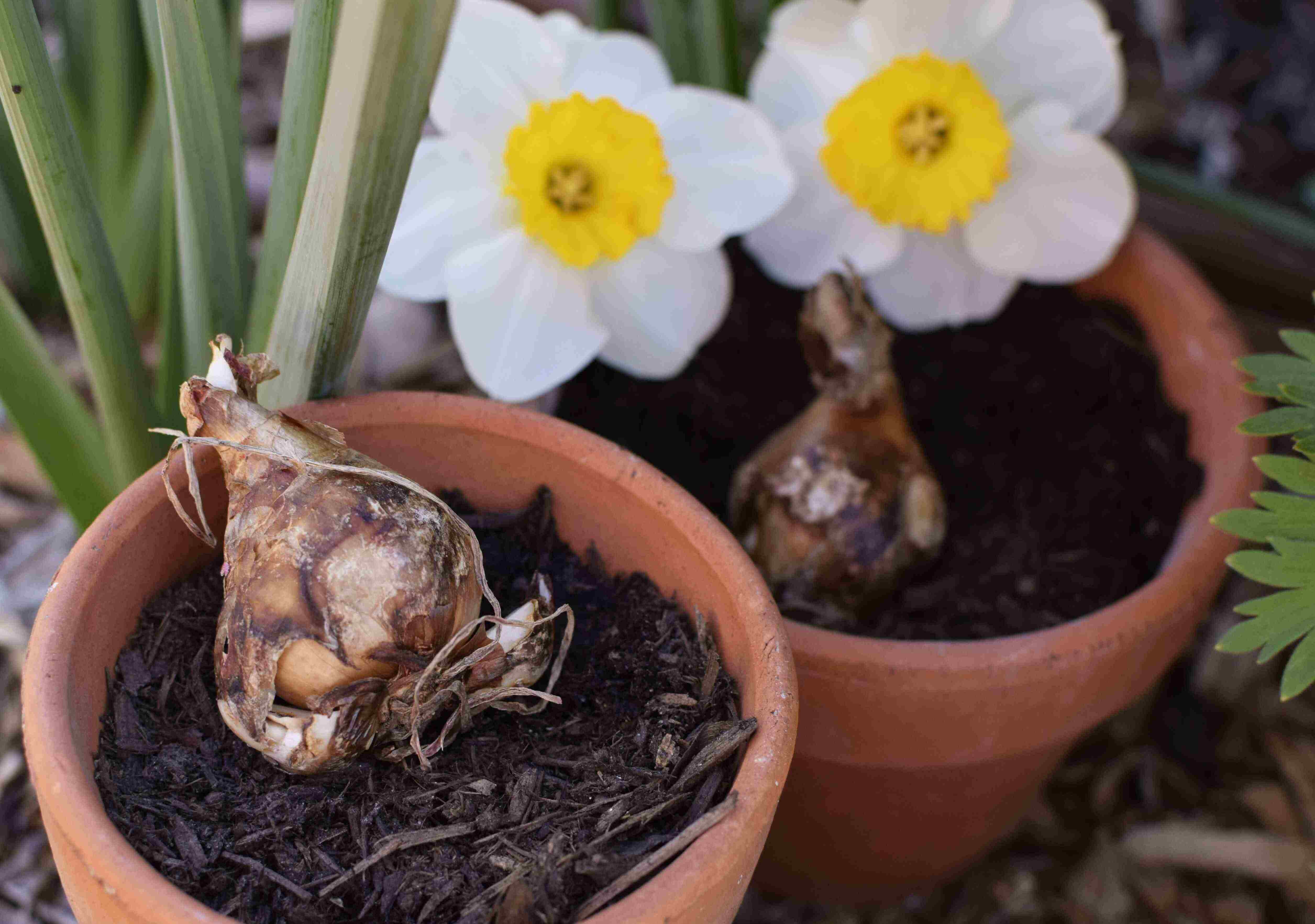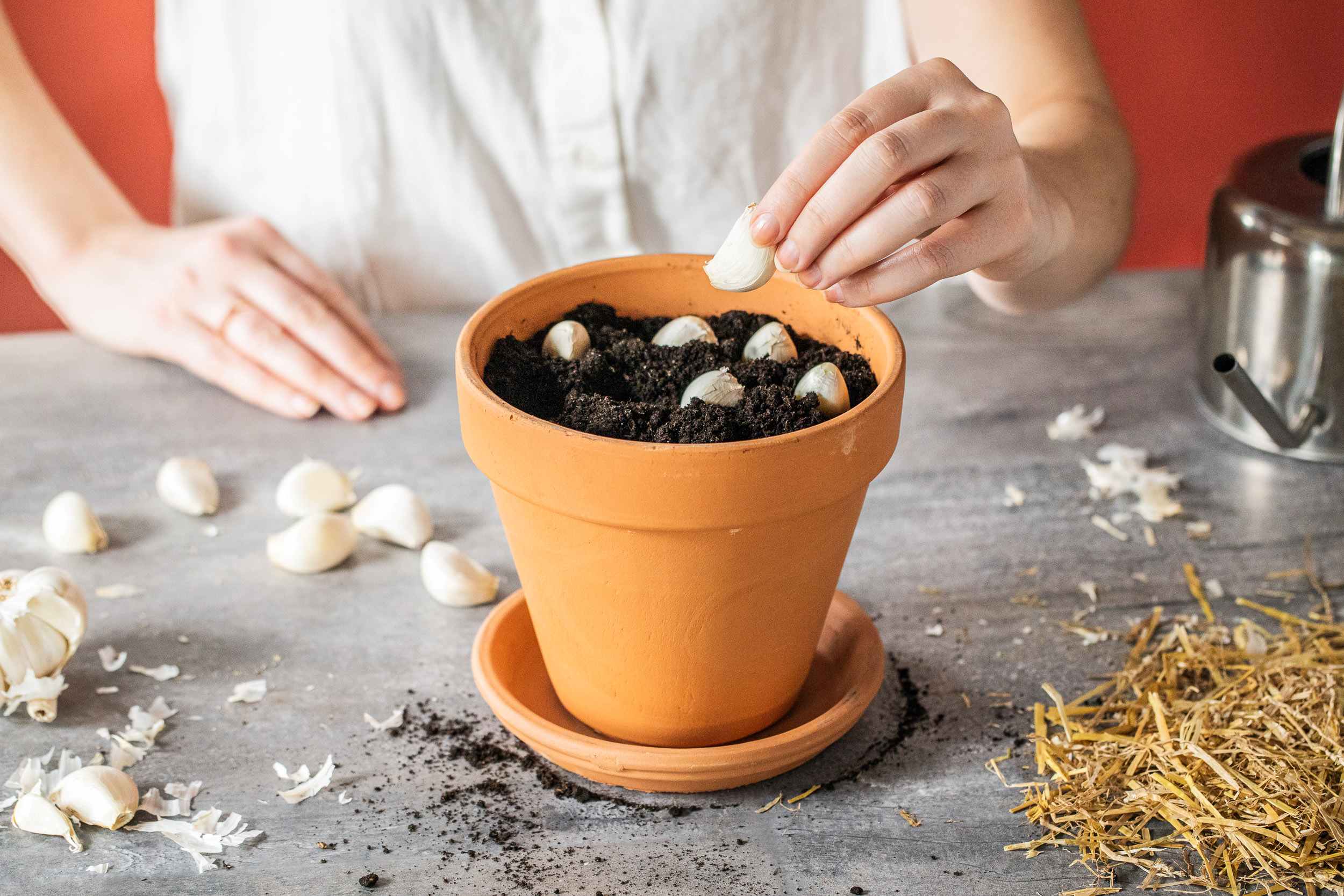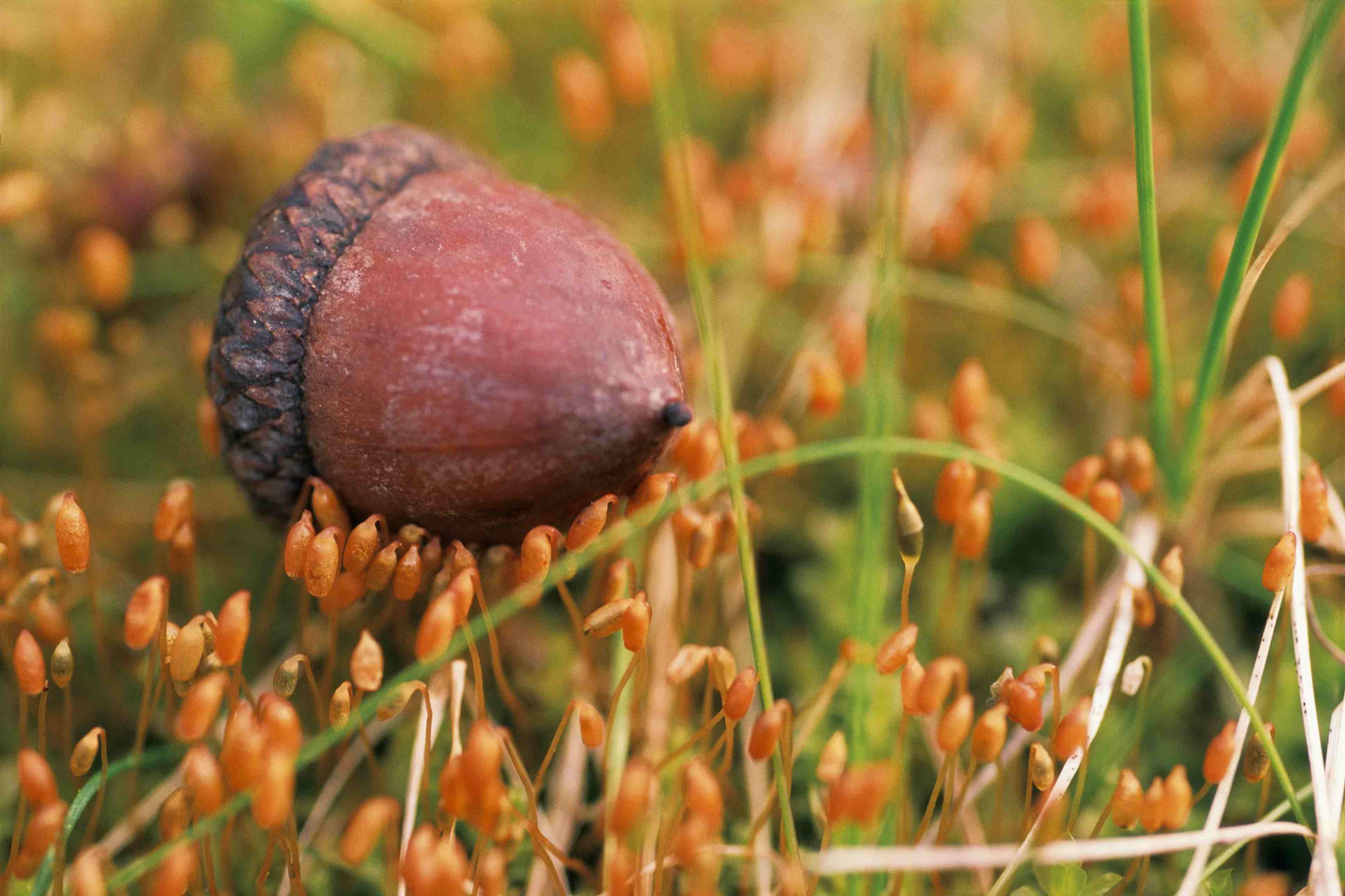Home>Types of Gardening>Ornamental Gardening>How To Store Daffodil Bulbs Until Planting


Ornamental Gardening
How To Store Daffodil Bulbs Until Planting
Published: August 25, 2023
Learn how to properly store daffodil bulbs until planting in this comprehensive guide on ornamental gardening.
(Many of the links in this article redirect to a specific reviewed product. Your purchase of these products through affiliate links helps to generate commission for Chicagolandgardening.com, at no extra cost. Learn more)
Table of Contents
Introduction
Ornamental gardening is a delightful pastime that allows individuals to transform their outdoor spaces into beautiful and vibrant sanctuaries. One key aspect of ornamental gardening is the cultivation of various types of plants, including flowers, shrubs, and trees. Among the many stunning flowers that grace gardens, daffodils stand out with their vibrant yellow blooms and delicate fragrance. These cheerful flowers are easy to grow and can bring a burst of color to any garden.
To ensure that daffodils thrive and bloom to their full potential, it’s crucial to properly store the bulbs until planting them. Storing daffodil bulbs is essential if you live in an area with harsh winters or if you plan to keep them for a certain period before planting. By providing the bulbs with the right storage conditions, you can protect them from damage and ensure their vitality for the upcoming growing season.
In this article, we will delve into the art of storing daffodil bulbs until planting. We will explore the best storage locations, preparation techniques, and storage methods to help you maintain the health and vigor of your daffodil bulbs. Whether you choose to store them indoors or outdoors, we will provide you with the necessary guidelines to keep your bulbs in optimal condition until the time comes for them to be planted.
Choosing the Right Storage Location
When it comes to storing daffodil bulbs, selecting the appropriate storage location is crucial. The ideal storage location should provide the right temperature, humidity, and light conditions to ensure the bulbs remain healthy and dormant during their storage period.
First and foremost, choose a storage location that maintains a cool and consistent temperature. Daffodil bulbs require a temperature range between 35°F and 45°F (1.6°C and 7.2°C) to prevent them from sprouting prematurely. Avoid storing the bulbs in areas that experience extreme temperature fluctuations, such as basements or attics, as this can disrupt their dormant state.
In addition to temperature, consider the humidity level of the storage area. High humidity can cause the bulbs to rot, while low humidity can lead to dehydration. Aim for a humidity range between 50% and 60% to provide the optimal conditions for bulb storage. If the humidity in your chosen storage location is too high, consider using moisture-absorbing materials like silica gel packets to reduce excess moisture.
Furthermore, it is important to keep the bulbs in a dark environment during storage. Exposure to light can trigger premature sprouting and weaken the bulbs. Therefore, select a storage location that is devoid of natural and artificial light. Avoid storing the bulbs near windows, which can expose them to sunlight or streetlights.
Consider the space requirements when choosing a storage location. Ensure that there is enough space to store the bulbs without them being cramped or crushed. Bulbs should be kept in a single layer and not stacked on top of each other. Crowding the bulbs can increase the risk of damage and fungal infections.
Lastly, make sure the storage location is well-ventilated to prevent the buildup of moisture and the growth of mold or fungi. Proper airflow will help maintain the bulbs’ freshness and prevent the development of diseases.
By following these guidelines and selecting a storage location that meets the temperature, humidity, light, and space requirements, you can provide the optimal environment for your daffodil bulbs during their storage period. This will increase the chances of successful growth and blooming when the time comes for you to plant them in your garden.
Preparing Your Daffodil Bulbs for Storage
Properly preparing your daffodil bulbs for storage is essential to ensure their viability and health during the dormant period. By following a few simple steps, you can maximize the chances of successful growth and abundant blooms once they are planted.
Start by inspecting the bulbs carefully. Discard any bulbs that show signs of damage, disease, or rot. It’s important to store only healthy bulbs to prevent the spread of infections and ensure optimal growth.
Once you have selected healthy bulbs, gently brush off any excess soil or debris. Avoid washing the bulbs, as excessive moisture can lead to rotting during storage.
Next, inspect the bulbs for any signs of pests or insects. Remove any pests you find manually and consider treating the bulbs with organic pest control measures if necessary.
After the bulbs have been cleaned and checked for pests, it is advisable to let them dry completely before storage. Place the bulbs in a well-ventilated area for a few days to allow any remaining moisture to evaporate. Drying the bulbs will help prevent fungal growth and rot during storage.
Once the bulbs are fully dry, consider dusting them with a fungicide powder or bulb dusting product. This will provide an added layer of protection against fungal diseases and pests during the storage period.
It is essential to label each bulb or group of bulbs before storing them. Use tags or markers to indicate the variety and color of the daffodils. Labeling will help you easily identify and organize the bulbs when it’s time to plant them in the garden.
Finally, place the prepared daffodil bulbs in a breathable storage container. Avoid using airtight containers or plastic bags, as they can trap moisture and promote the growth of molds. Instead, opt for mesh bags, wooden crates, or paper bags that allow for proper airflow.
By taking the time to properly prepare your daffodil bulbs for storage, you are ensuring their health and vitality during the dormant period. These simple steps will help protect the bulbs from damage, diseases, and pests, setting the stage for successful growth and vibrant blooms in your garden.
Storing Daffodil Bulbs Indoors
If you live in an area with particularly harsh winters or limited outdoor space, storing your daffodil bulbs indoors can be a practical option to ensure their survival and readiness for planting. Here are the steps to safely store your daffodil bulbs indoors:
- Choose a suitable storage container: Select a breathable container such as a mesh bag, wooden crate, or a cardboard box. Make sure the container is large enough to hold the bulbs without overcrowding.
- Place a layer of dry, clean vermiculite or peat moss at the bottom: This will provide a cushioning effect and help maintain the right moisture level inside the container.
- Add a layer of daffodil bulbs: Arrange the bulbs in a single layer, ensuring they do not touch each other. If you have multiple varieties or colors, consider grouping them separately.
- Add another layer of vermiculite or peat moss: Cover the bulbs fully with a layer of vermiculite or peat moss. This additional layer will help regulate moisture and provide insulation.
- Repeat the layering process: If you have more bulbs to store, repeat the layering process until all the bulbs are safely stored in the container.
- Label the container: Clearly mark the container with the variety and color of the bulbs stored inside. This will help you easily identify the bulbs and avoid confusion when it’s time to plant.
- Store the container in a cool, dark place: Find a location in your home that maintains a temperature between 35°F and 45°F (1.6°C and 7.2°C) and is free from extreme temperature fluctuations and exposure to light. Ideal locations include a garage, basement, or cellar.
- Check on the stored bulbs periodically: Throughout the storage period, inspect the bulbs for signs of mold, rot, or drying out. Remove any affected bulbs to prevent the spread of diseases.
- Provide proper ventilation: Ensure that the storage area is well-ventilated to prevent the buildup of excess moisture. Good airflow will help keep the bulbs fresh and prevent the growth of mold.
By storing your daffodil bulbs indoors using the steps above, you can protect the bulbs from harsh winter conditions and ensure their readiness for planting. With proper care and patience, your stored bulbs will be bursting with life when it’s time to greet the arrival of spring.
Storing Daffodil Bulbs Outdoors
Storing daffodil bulbs outdoors is another option if you have suitable outdoor space available. Here are the steps to safely store your daffodil bulbs outdoors:
- Choose the right location: Find a spot in your garden that meets the temperature and light requirements for storing daffodil bulbs. The location should offer protection from extreme temperature fluctuations, excessive moisture, and direct sunlight.
- Prepare the soil: Before storing the bulbs, prepare the soil by loosening it and removing any weeds or debris. This will ensure a clean and conducive environment for the bulbs.
- Plant the bulbs: Dig a hole or trench in the prepared soil, making sure it is deep enough to accommodate the bulbs. Place the bulbs in the hole or trench, ensuring proper spacing between them.
- Cover the bulbs: Once the bulbs are planted, cover them with soil, making sure they are adequately buried. This will provide insulation and protection during the winter months.
- Add a layer of mulch: After covering the bulbs with soil, add a layer of organic mulch such as straw or wood chips. This will help regulate temperature and moisture levels, providing an optimal environment for the bulbs.
- Mark the area: Use markers or labels to identify the locations where the bulbs are stored. This will ensure that you don’t accidentally disturb or damage the bulbs during other gardening activities.
- Protect from pests and animals: To prevent pests, rodents, or animals from digging up the bulbs, consider using wire mesh or netting to cover the area. This will offer additional protection during the storage period.
- Check regularly: Throughout the winter, periodically check the stored bulbs to ensure they are not exposed or damaged. Remove any pests, weeds, or debris that may affect the bulbs’ health.
- Keep an eye on moisture: While outdoor storage provides natural moisture levels, monitor the moisture content of the soil. Make sure the soil does not become excessively wet or dry, as both conditions can harm the bulbs.
By storing your daffodil bulbs outdoors following these steps, you can take advantage of the natural environment and provide the necessary conditions for the bulbs to remain dormant and healthy until spring arrives. With proper care and attention, your stored bulbs will be ready to burst into vibrant blooms when the gardening season begins.
Checking on Stored Bulbs Regularly
While storing daffodil bulbs, it is essential to regularly check on them to ensure their health and well-being. By monitoring the bulbs periodically, you can catch any potential issues early on and take necessary actions to prevent further damage. Here are some tips for checking on your stored bulbs:
- Inspect for mold and rot: During your regular checks, carefully examine the bulbs for any signs of mold or rot. If you spot any affected bulbs, promptly remove them from the storage container or soil to prevent the spread of disease.
- Check for excessive moisture: Check the moisture level in the storage container or soil. If it is too damp, consider increasing ventilation or adding moisture-absorbing materials such as silica gel packets.
- Monitor for drying out: On the other hand, if the bulbs appear excessively dry, you may need to lightly mist them with water to provide some moisture. Be careful not to overwater, as this can lead to rotting.
- Look out for pests: Keep an eye out for any signs of pests or insects that may have infiltrated the storage area. Remove any pests manually and consider using organic pest control methods if necessary.
- Check for sprouting: Occasionally, daffodil bulbs may begin to sprout prematurely during storage. If you observe any signs of sprouting, it is an indication that the bulbs need to be planted sooner than expected.
- Make adjustments as needed: Based on your observations during the checks, make any necessary adjustments to ensure the optimal storage conditions for the bulbs. This could involve modifying ventilation, moisture levels, or lighting conditions.
By regularly checking on your stored daffodil bulbs, you can intervene at the right time to address any potential issues and promote the bulbs’ overall health. These simple checks and adjustments will help ensure that your daffodil bulbs remain in optimal condition until it’s time for them to be planted in your garden.
Tips for Successful Daffodil Bulb Storage
To ensure the success of your daffodil bulb storage and maximize their performance when it’s time to plant, consider these helpful tips:
- Choose high-quality bulbs: Select healthy and disease-free bulbs for storage to ensure their vitality during the dormant period.
- Label and organize: Properly label the stored bulbs with their variety and color to avoid confusion when it’s time for planting. Organize them by type if you have different varieties stored.
- Avoid overcrowding: Store the bulbs in containers or soil with enough space to prevent them from getting crushed or damaged. Crowding can also increase the risk of disease and rot.
- Provide proper ventilation: Ensure adequate airflow around the stored bulbs to prevent the buildup of excess moisture and the growth of mold or fungi.
- Control humidity: Maintain the humidity levels in the storage area between 50% and 60%. Excessive moisture can lead to rot, while low humidity can cause bulbs to dry out.
- Maintain the right temperature: Store the bulbs in a cool location with temperatures between 35°F and 45°F (1.6°C and 7.2°C). Avoid extreme temperature fluctuations.
- Avoid exposure to light: Keep the bulbs in a dark environment during storage as exposure to light can stimulate premature sprouting.
- Regularly check for problems: Inspect the bulbs for signs of mold, rot, pests, or drying out. Take prompt action to address any issues and remove affected bulbs.
- Keep storage containers dry: Ensure that the storage containers or soil are not excessively wet or waterlogged, as this can lead to bulb rot and other diseases.
- Do not store with fruits: Keep daffodil bulbs away from fruits or vegetables during storage, as ripening fruits release ethylene gas, which can negatively affect the bulbs.
By following these tips, you can greatly increase the likelihood of successful daffodil bulb storage. When the time comes to plant your stored bulbs, they will be in prime condition, ready to bring vibrant color and beauty to your garden.
Conclusion
Properly storing daffodil bulbs until planting is a crucial step in ensuring their health and vitality. By choosing the right storage location, preparing the bulbs correctly, and implementing appropriate storage methods, you can protect the bulbs from damage, diseases, and other threats. Whether you opt for indoor or outdoor storage, regular checks and adjustments are essential to maintain optimal storage conditions.
Remember to select high-quality bulbs and label them for easy identification. Avoid overcrowding and provide proper ventilation to prevent moisture buildup. Maintaining the right temperature, avoiding exposure to light, and checking for issues like mold, pests, or excessive drying are crucial for successful storage. Additionally, controlling humidity and ensuring dry storage containers or soil are important factors to consider.
With patience, care, and attention to these storage techniques, your daffodil bulbs will be primed for success when it’s time to plant them in your garden. The reward will be a stunning display of vibrant yellow blooms and an enchanting fragrance that will make your garden a true oasis.



